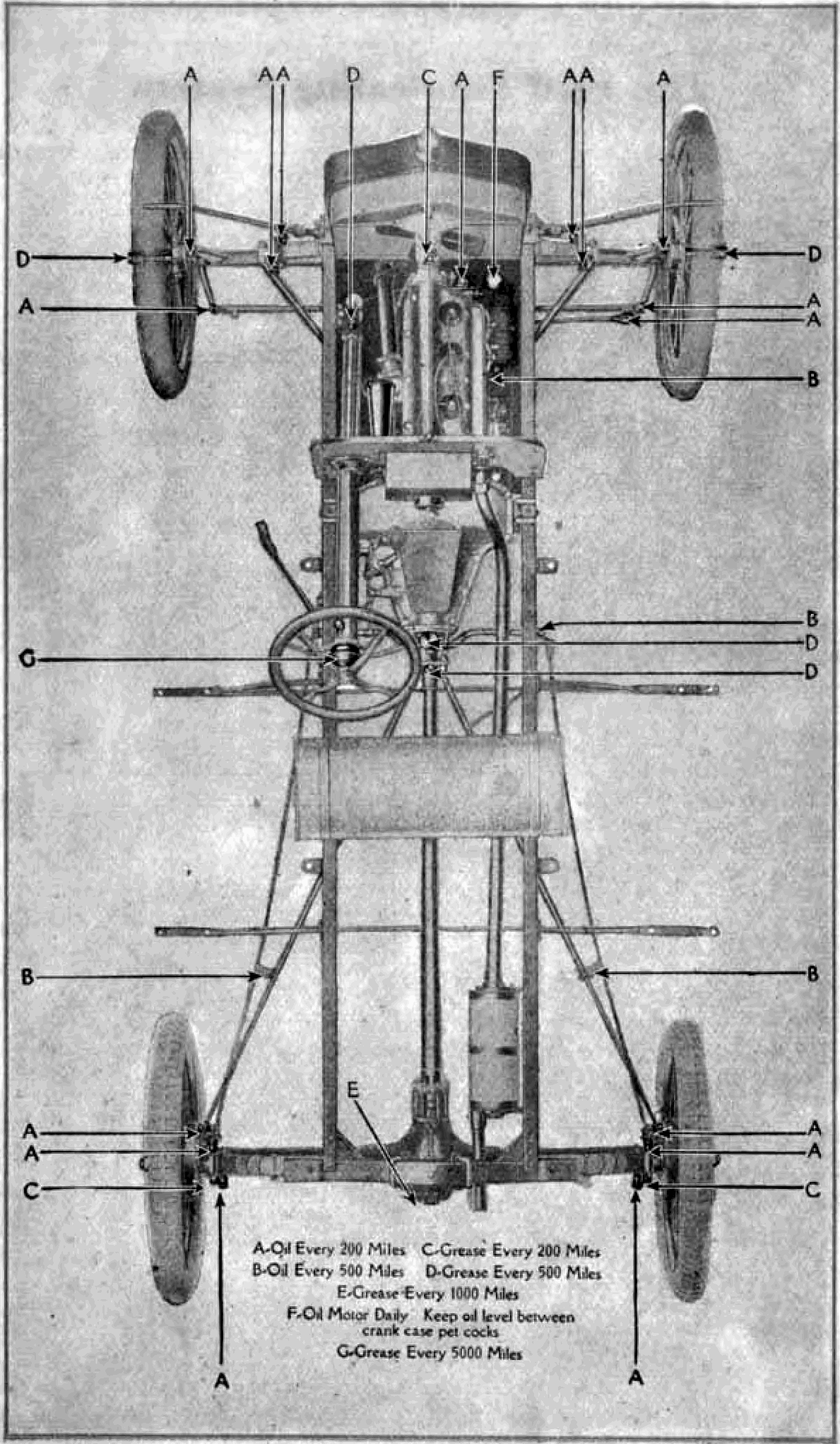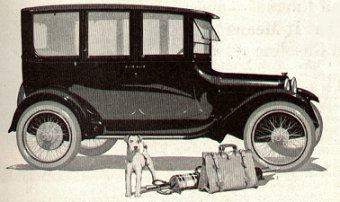Body-on-frame on:
[Wikipedia]
[Google]
[Amazon]


 Body-on-frame, also known as ladder frame construction, is a common
Body-on-frame, also known as ladder frame construction, is a common

 The Ford Model T carried the tradition of body-on-frame over from horse-drawn buggies, helping to facilitate high volume manufacturing on a moving assembly line. In the United States, frequent changes in automotive design made it necessary to use a ladder frame rather than unibody construction to make it possible to change the design without having to change the
The Ford Model T carried the tradition of body-on-frame over from horse-drawn buggies, helping to facilitate high volume manufacturing on a moving assembly line. In the United States, frequent changes in automotive design made it necessary to use a ladder frame rather than unibody construction to make it possible to change the design without having to change the
Ford assembly line featuring body-on-frame car (historic)
{{DEFAULTSORT:Body-On-Frame Automotive chassis types Structural system Structural engineering


 Body-on-frame, also known as ladder frame construction, is a common
Body-on-frame, also known as ladder frame construction, is a common motor vehicle
A motor vehicle, also known as motorized vehicle or automotive vehicle, is a self-propelled land vehicle, commonly wheeled, that does not operate on rails (such as trains or trams) and is used for the transportation of people or cargo.
The ...
construction method, whereby a separate body or coach is mounted on a strong and relatively rigid vehicle frame or chassis
A chassis (, ; plural ''chassis'' from French châssis ) is the load-bearing framework of an artificial object, which structurally supports the object in its construction and function. An example of a chassis is a vehicle frame, the underpar ...
that carries the powertrain (the engine and drivetrain) and to which the wheels and their suspension, brakes, and steering are mounted. While this was the original method of building automobiles, body-on-frame construction is now used mainly for heavy truck
A truck or lorry is a motor vehicle designed to transport cargo, carry specialized payloads, or perform other utilitarian work. Trucks vary greatly in size, power, and configuration, but the vast majority feature body-on-frame constructi ...
s, pickups, and predominantly large SUVs.
In the late 19th century the frames, like those of the carriages they replaced, might be made of wood (commonly ash
Ash or ashes are the solid remnants of fires. Specifically, ''ash'' refers to all non-aqueous, non-gaseous residues that remain after something burns. In analytical chemistry, to analyse the mineral and metal content of chemical samples, ash ...
), reinforced by steel flitch plates – but in the early 20th century steel ladder frames or chassis rapidly became standard. Mass production of all-metal bodies began with the Budd Company and the Dodge Brothers. Mass production of all-metal bodies became general in the 1920s but Europe, with exceptions, followed almost a decade later. Europe's custom-made or "coachbuilt" cars usually contained some wood framing or used aluminium alloy castings. Towards the beginning of international automobile assembly and construction, most manufacturers created rolling chassis
A rolling chassis is the chassis without bodywork of a motor vehicle ( car, truck, bus, or other vehicle), assembled with suspension and wheels.
Heavy vehicles
Separate chassis remain in use for almost all heavy vehicles ranging from pickup ...
consisting of a powertrain, suspension, steering column and a fuel tank that was then sent to a coachbuilder
A coachbuilder or body-maker is someone who manufactures bodies for passenger-carrying vehicles.Construction has always been a skilled trade requiring a relatively lightweight product with sufficient strength. The manufacture of necessarily ...
that added the body, interior and upholstery to the customers specific requests.
In contrast, unibody
A vehicle frame, also historically known as its '' chassis'', is the main supporting structure of a motor vehicle to which all other components are attached, comparable to the skeleton of an organism.
Until the 1930s, virtually every car ha ...
or monocoque designs, where panels within the body supported the car on its suspension, were developed by European manufacturers in the late 1920s with Budd USA (which had a number of large factories in Europe) and its technical knowhow. Because of the high cost of designing and developing these structures and the high cost of specialised machinery to make the large pressings required by this style of construction it is not used by low-volume manufacturers, who might construct an equivalent by welding steel tube to form a suitable space frame.
History

 The Ford Model T carried the tradition of body-on-frame over from horse-drawn buggies, helping to facilitate high volume manufacturing on a moving assembly line. In the United States, frequent changes in automotive design made it necessary to use a ladder frame rather than unibody construction to make it possible to change the design without having to change the
The Ford Model T carried the tradition of body-on-frame over from horse-drawn buggies, helping to facilitate high volume manufacturing on a moving assembly line. In the United States, frequent changes in automotive design made it necessary to use a ladder frame rather than unibody construction to make it possible to change the design without having to change the chassis
A chassis (, ; plural ''chassis'' from French châssis ) is the load-bearing framework of an artificial object, which structurally supports the object in its construction and function. An example of a chassis is a vehicle frame, the underpar ...
, allowing frequent changes and improvements to the car's bodywork and interior (where they were most noticeable to customers) while leaving the chassis and driveline unchanged, and thus keeping costs down and design times short. It was also easy to use the same chassis and driveline for several very different cars. Especially in the days before computer-aided design
Computer-aided design (CAD) is the use of computers (or ) to aid in the creation, modification, analysis, or optimization of a design. This software is used to increase the productivity of the designer, improve the quality of design, improve co ...
, this was an advantage.
Most small passenger vehicles switched to unibody
A vehicle frame, also historically known as its '' chassis'', is the main supporting structure of a motor vehicle to which all other components are attached, comparable to the skeleton of an organism.
Until the 1930s, virtually every car ha ...
construction by the end of the 1930s. The trend had started with cars like the Citroën Traction Avant
The Citroën Traction Avant () is the world’s first unibody front-wheel-drive car. A range of mostly 4-door saloons and executive cars, were made with four or six-cylinder engines, produced by the French manufacturer Citroën from 1934 to 1957. ...
(1934) and Opel Olympia (a General Motors
The General Motors Company (GM) is an American Multinational corporation, multinational Automotive industry, automotive manufacturing company headquartered in Detroit, Michigan, United States. It is the largest automaker in the United States and ...
design) introduced in 1935, and the Chrysler Airflow
The Chrysler Airflow is a full-size car produced by Chrysler from 1934 to 1937. The Airflow was the first full-size American production car to use streamlining as a basis for building a sleeker automobile, one less susceptible to air resistance ...
. Truck
A truck or lorry is a motor vehicle designed to transport cargo, carry specialized payloads, or perform other utilitarian work. Trucks vary greatly in size, power, and configuration, but the vast majority feature body-on-frame constructi ...
s, bus manufacturers and large low volume cars or those made in the United States continued to use separate bodies on "conventional" frames. Body-on-frame remains the preferred construction method for heavy-duty commercial vehicles (especially those intended to carry or pull heavy loads, such as trucks and some sport utility vehicles (SUVs)) but as production volumes rise increasing numbers of SUVs and crossover SUVs are switching to unibody
A vehicle frame, also historically known as its '' chassis'', is the main supporting structure of a motor vehicle to which all other components are attached, comparable to the skeleton of an organism.
Until the 1930s, virtually every car ha ...
frames. Mass-market manufacturers Ford, General Motors
The General Motors Company (GM) is an American Multinational corporation, multinational Automotive industry, automotive manufacturing company headquartered in Detroit, Michigan, United States. It is the largest automaker in the United States and ...
and Chrysler
Stellantis North America (officially FCA US and formerly Chrysler ()) is one of the " Big Three" automobile manufacturers in the United States, headquartered in Auburn Hills, Michigan. It is the American subsidiary of the multinational automotiv ...
are abandoning true body-on-frame SUVs, opting, when sales volume permits, for more efficient unibody construction. Toyota
is a Japanese multinational automotive manufacturer headquartered in Toyota City, Aichi, Japan. It was founded by Kiichiro Toyoda and incorporated on . Toyota is one of the largest automobile manufacturers in the world, producing about 10 ...
currently manufactures the most body-on-frame SUVs with the 4Runner, Sequoia, Land Cruiser, Lexus GX and LX followed by Nissan
, trading as Nissan Motor Corporation and often shortened to Nissan, is a Japanese multinational automobile manufacturer headquartered in Nishi-ku, Yokohama, Japan. The company sells its vehicles under the Nissan, Infiniti, and Datsun bra ...
with the Patrol
A patrol is commonly a group of personnel, such as law enforcement officers, military personnel, or security personnel, that are assigned to monitor or secure a specific geographic area.
Etymology
From French ''patrouiller'', from Old Fren ...
, Armada, and Infiniti QX56/80.
Examples
The following is a list of production cars, SUVs, and light-duty pickup trucks that currently have a body-on-frame construction. The list is divided by vehicle category.See also
* Backbone chassis *C-channel
C Channel was a short-lived Canadian premium television channel specialising in arts programming. It was one of Canada's first licensed "pay TV" channels when it began in 1983 but it ended in failure within five months.
History
Toronto-base ...
* Coachwork
* Exoskeleton car
* Skateboard (automotive platform)
* Space frame
In architecture and structural engineering, a space frame or space structure ( 3D truss) is a rigid, lightweight, truss-like structure constructed from interlocking struts in a geometric pattern. Space frames can be used to span large areas w ...
* Subframe
* Superleggera
Superleggera (Italian for ''Superlight'') is a custom tube and alloy panel automobile coachwork construction technology developed by Felice Bianchi Anderloni of Italian coachbuilder Carrozzeria Touring Superleggera. A separate chassis was st ...
References
External links
Ford assembly line featuring body-on-frame car (historic)
{{DEFAULTSORT:Body-On-Frame Automotive chassis types Structural system Structural engineering